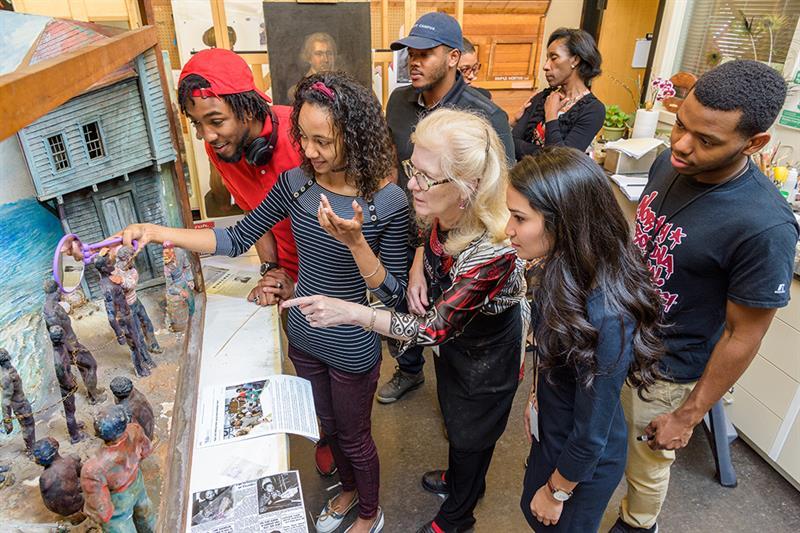
Category: Art Conservation

The many sides of Joyce Hill Stoner
June 19, 2024 Written by CAS Staff
The UD Department of Art Conservation's Rosenberg professor and PSP director Dr. Joyce Hill Stoner is the subject of a feature article in the W&M Alumni Magazine, which looks at Stoner's life as an oral historian, teacher, artist's confidante, author, and more.
From the Spring 2024 article by Claire De Lisle:
Joyce Hill Stoner ('68) is many things: an eminent art conservator, a teacher, a playwright, an author, a historianm a mentor, a friend to many. She's the foremost expert on the techniques of late American painter Andrew Wyeth. She's got a way of telling stories that makes them dramatic and funny, no matter the subject.
Stoner has worked on art from the Smithsonian Institution to the Metropolitan Museum of Art to the Winterthur Museum. She has touched the ceiling of the Sistine Chapel, interviewed the who’s who of the art conservation world and written the definitive textbook on restoring paintings. She is now a named professor and director of the Preservation Studies Doctoral Program at the University of Delaware and an instructor in paintings conservator in UD’s joint program with Winterthur. . . .
Conservators clean, preserve and repair works of art. Stoner describes art conservation as a “three-legged stool” that requires science, art history and studio skills.
The description was coined by George L. Stout, considered one of the founders of art conservation, with whom Stoner worked.
Science includes chemistry (knowing which solvents will dissolve which varnishes or analyzing pigments under a microscope to determine their composition, for example) as well as physics (understanding thermodynamics and light refraction, for example) and materials science (how different materials behave under stress).
Art history can encompass archeology, material culture (how people use objects) and library science, depending on the type of art you might conserve and its age.
Fine art studio techniques allow the conservator to create a repair that is seamless with the art around it — replicating original brushstrokes on a painting or sculpting a realistic replacement toe for a statue.
When Stoner began teaching in this field, she thought the fine art skills were the most crucial and couldn’t be taught. Working with students has since shown her that the most important elements are patience, attention to detail and a passion for the work. You can learn the studio skills.
“You must love the art,” she says.
To read more about Dr. Stoner's remarkable life and journey, read the full article at W&M Alumni Magazine online.
